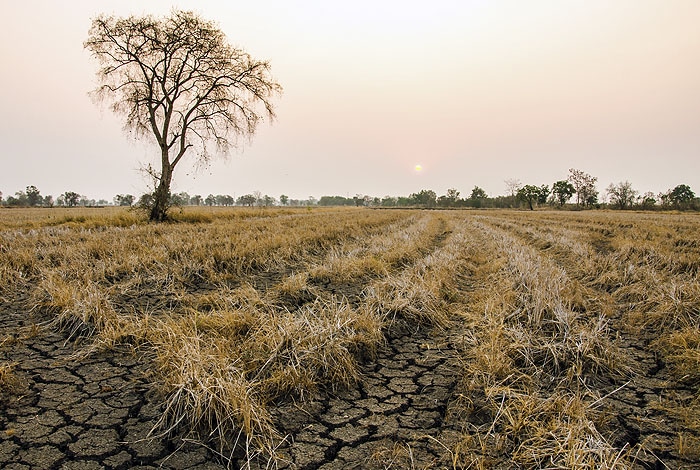Nov 26 2019
A study, reported recently in Nature Climate Change, reveals that the effect of extreme drought on plants will become increasingly dominant under future climate change.
 Drought is already the most widespread factor affecting plant production via direct physiological impacts such as water limitation and heat stress. Image Credit: Dreamstime.
Drought is already the most widespread factor affecting plant production via direct physiological impacts such as water limitation and heat stress. Image Credit: Dreamstime.
This study also reveals that droughts will become more common under future climates, and more of those phenomena will be extreme, leading to a further decrease in plant production important for animal and human populations.
Even though plants can, in many cases, benefit from increased levels of carbon dioxide that are predicted for the future atmosphere, the impact of severe drought on destroying these plants will be extreme, especially in the Amazon, South Africa, Mediterranean, Australia, and southwest USA.
Chonggang Xu, Study Lead Author, Los Alamos National Laboratory
In general, drought events in the future are related to low precipitation, low humidity, changes in carbon emitted from fire disturbances, and high temperature.
The frequency of extreme droughts (determined by low plant-accessible soil water) in a year is expected to increase by a factor of ~3.8 under a condition of high emission of greenhouse gas and by a factor of ~3.1 under a condition of intermediate emission of greenhouse gas during the period from 2075 to 2099, when compared with the historical period from 1850 to 1999.
Although drought is already the most general factor that affects plant production through direct physiological effects such as heat stress and water limitation, indirectly it could also have a destructive effect, in the form of high frequency and intensity of disturbances such as insect and fire outbreaks that emit more carbon back into the atmosphere.
CO2 is fixed into an ecosystem by plants through photosynthesis, which plays an important role in the net carbon balance of the terrestrial biosphere that causes its regulation of atmospheric CO2. Increased CO2 concentrations in future decades can help increase plant production, but the combination of heat stress, low soil water availability, and disturbances related to droughts could make the benefits of such fertilization ineffective.
According to Xu, “Future plant production under elevated carbon dioxide levels remains highly uncertain despite our knowledge on carbon dioxide fertilization effects on plant productivity.”
The scientists examined the outputs from 13 Earth System Models (ESMs). Their findings reveal that because of a marked increase in the frequency of extreme droughts, the magnitude of globally averaged decreases in plant production will be about three times the last quarter of this century in relation to that of the historical period of the study (1850–1999).
For plants experiencing moderate or mild droughts, the condition is not as bad. The issue is that further droughts to come will be extreme.
Our analysis indicates a high risk of increasing impacts of extreme droughts on the global carbon cycle with atmospheric warming. At the same time though, this drought risk will be potentially mitigated by positive anomalies of plant production associated with favorable environmental conditions.
Chonggang Xu, Study Lead Author, Los Alamos National Laboratory
The research was financially supported by the U.S. Department of Energy Office of Science and the Los Alamos Laboratory Directed Research and Development Office.